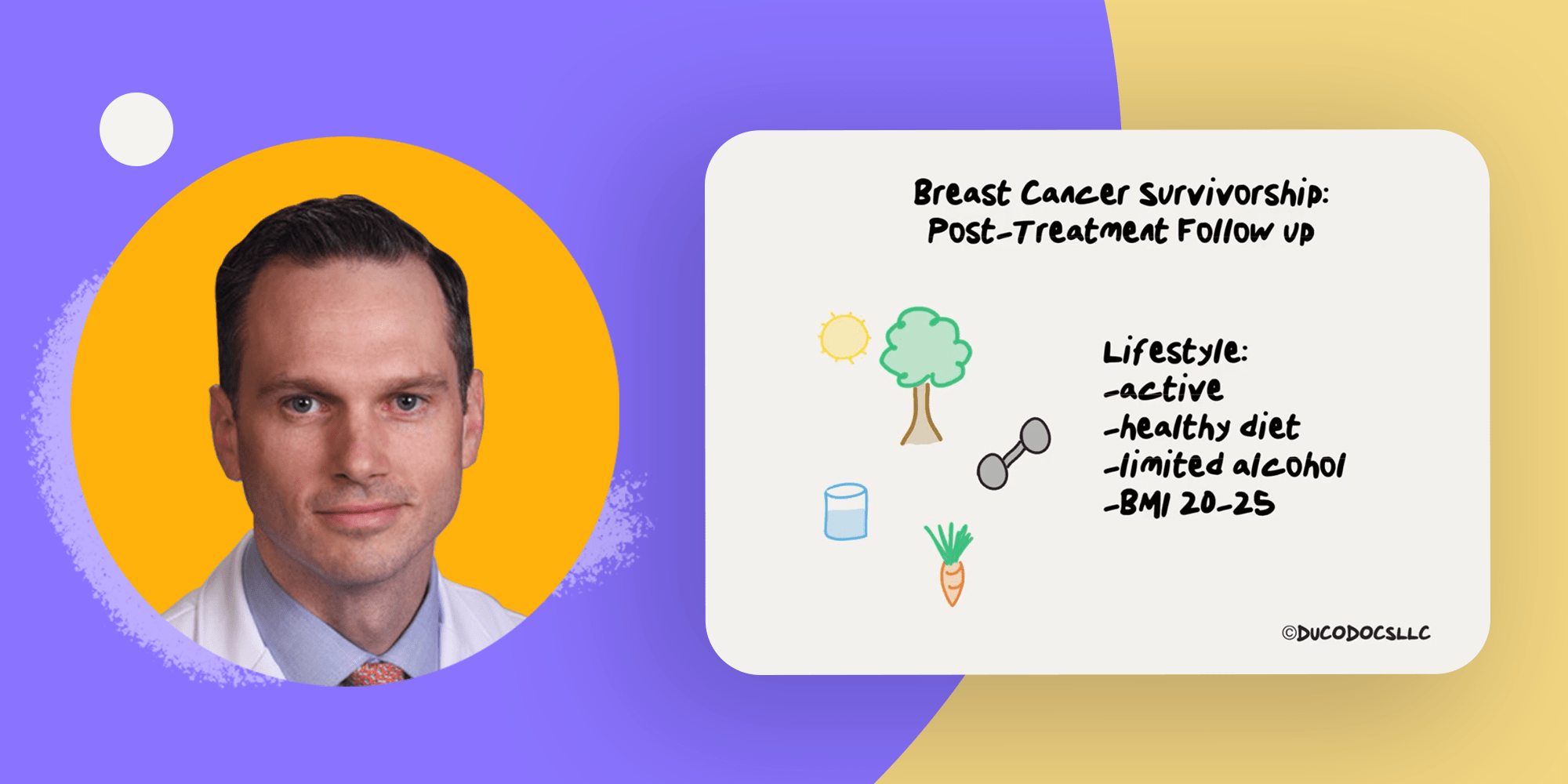A whiteboard for health literacy – the story of Dr. David Grew

Table of Contents
David Grew, M.D., is a Connecticut-based radiation oncologist practicing at Trinity Health of New England. He is also the founder of PRIMR, an application that allows physicians to provide patients with digitally recorded, personalized explanations regarding their medical conditions and treatments.
In his work with patients, Dr. Grew has gone from drawing out explanations of their condition using pen and paper to creating short and easy to follow videos using Explain Everything. You can find out all educational content he has created on his website.
Here’s an example of a video explanation Dr. Grew uses to enhance patient understanding of cancer treatment:
A digital whiteboard for patient education
I am a radiation oncologist practicing at Trinity Health of New England and I have a passion for optimizing patient education in my practice. During medical school, I worked as a whiteboard instructor teaching pre-medical students the medical school entrance exam.
Patient education is health care communication about conditions, treatments and how to navigate the healthcare system. It can include verbal communication, physical visual aides, and digital content. Good patient education has been shown to improve the number of health-related outcomes including blood pressure control, medication compliance and patient satisfaction.
Here are some reasons why it’s important to educate patients:
The need for educational content in healthcare
Traditionally, patient education happens in person, face-to-face between a doctor or nurse and each individual patient. There are several pitfalls to this approach. Firstly, patients may be anxious in a clinic environment and therefore sometimes retain as little as 20-40% of what was said.
Secondly, during “live” encounters, patients have limited time to process large amounts of important information and can have problems posing personalized questions to their doctor. And last but not least, some patients are simply visual learners, rendering verbal knowledge transfers mostly ineffective.
Then there are the medical professionals themselves. Doctors may explain the same concept thousands of times over the course of their career, and their performance and delivery can be inconsistent, especially on hectic days. Repetitive tasks such as providing instructions can contribute to physician burnout. And since patients may report an incomplete picture of the situation to their loved ones, physicians sometimes find themselves repeating the explanation yet again to the patient’s family.
Giving patients digital explanations before the face to face meeting gives them:
- more time to get familiar with the medical content,
- the chance to prepare themselves for their meeting with the doctor and ask them any questions they may have,
- the opportunity to go back to the content as many times as they need,
- a better understanding of their problem, since they can review the material at their convenience and not in the stressful environment of a brief hospital visit.
Find out more about the advantages of creating video explanations:
Solution – digital explanations for medical problems
Dr. Grew’s first attempt to solve the problem of poor retention and repetitive explanations was to use pen and paper to illustrate the anatomy behind his treatments in order to enhance his verbal explanation.
Some patients would ask to keep the paper, which gave me the idea to digitize my explanations so I could give patients something to review at home with family. I used a few other teaching applications but grew frustrated with their overly complex user interfaces.
This is how it all started:
When I tried Explain Everything, its simplicity and ease of use for a non-technical person was a game changer. My productivity really took off – I created a resource website for cancer patients, and then I started a company called PRIMR so any doctor creator can send their content to patients’ mobile devices securely and with just a few clicks. Now, patients can consume their doctor’s explanations on demand and easily share them with their family as well.
Find out more about creating whiteboard video explanations:
Dr. Grew joined Explain Everything co-founder Bartosz Gonczarek for a podcast to talk about the importance of health literacy for patients of all walks of life. To access the entire podcast, you can:
- Watch the conversation on YouTube with the main concepts visualized.
- Listen to the podcast on iTunes or Spotify.
⏺️ Want to learn about creating video explanations? Sign up for the free webinar 👇🏼

David Grew MD. is a Connecticut-based radiation oncologist practicing at Trinity Health of New England as well as the founder of PRIMR, an application that allows physicians to provide patients with digitally recorded, personalized explanations regarding their medical conditions and treatments.
📚 Want to read more? Dive into our most recent blog posts:
- Smart tutoring app, teach the way you want with digital whiteboard
- Free Teaching Templates for Elementary School
- Five diagrams that are key to visual learning in e-learning
- Why Explain Everything Advanced is your best Jamboard replacement
- Retrospective templates to show student progress and why you need them

